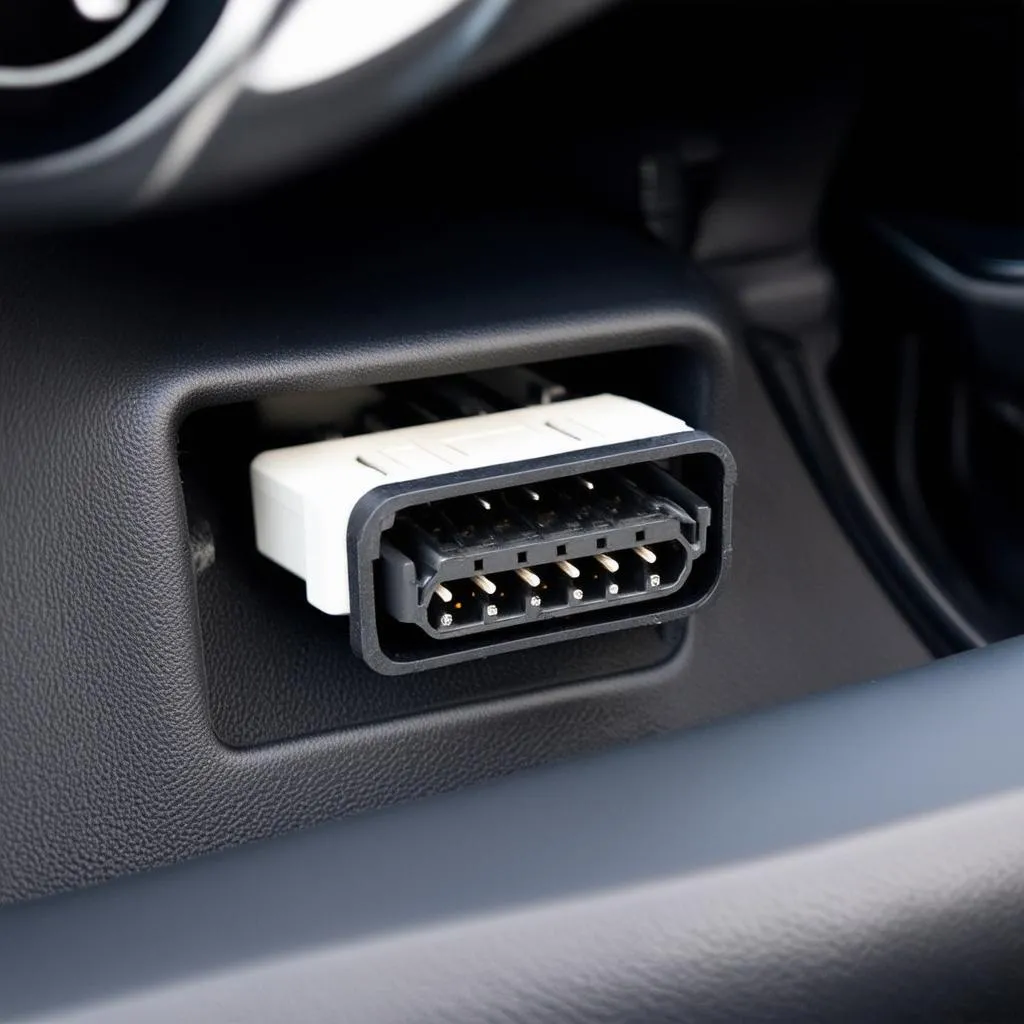Have you ever needed to connect a diagnostics tool to your BMW X3 but couldn’t find the OBD port? You’re not alone. Many BMW owners find themselves scratching their heads when it comes to locating this crucial connection point. This guide will take you through everything you need to know about the Bmw X3 Obd Port, including its location, purpose, and some common troubleshooting tips.
Why is the OBD Port Important?
The OBD (On-Board Diagnostics) port, often referred to as the “diagnostic port,” is your gateway to understanding your BMW X3’s health. It’s a standardized connection point that allows professional mechanics, as well as DIY enthusiasts, to access the vehicle’s computer systems.
Think of it as the “brain” of your car. The OBD port allows you to:
- Diagnose engine issues: Diagnose issues like misfires, fuel problems, and emissions irregularities. This can help you catch problems early and prevent costly repairs.
- Read and clear error codes: Access stored error codes that indicate specific problems in the vehicle’s systems.
- Monitor real-time data: Track various parameters like engine speed, fuel consumption, and coolant temperature.
- Program new keys and remotes: Add a new key or remote to your BMW X3.
- Re-flash the ECU: Update the car’s computer software to fix bugs or improve performance.
Where is the Bmw X3 Obd Port Located?
The OBD port location on a BMW X3 is consistent across most models. You’ll find it tucked away under the steering wheel, on the driver’s side.
Here’s a step-by-step guide to finding it:
- Enter your BMW X3: Make sure the ignition is off.
- Locate the steering column: You’ll find a black plastic cover located underneath the steering wheel.
- Open the cover: The cover is usually secured with a small tab or clip.
- The OBD port will be visible: You’ll see a rectangular connector with 16 pins. It’s usually white or black in color.
 obd-port-bmw-x3
obd-port-bmw-x3
Common Issues with the Bmw X3 Obd Port
While the OBD port is usually reliable, you might encounter some issues, such as:
- The port is hidden or covered by debris: Dirt or other debris can accumulate in the area, making it hard to find.
- The port is damaged: Physical damage, such as a bent pin or a loose connection, can prevent proper communication.
- The car’s electronics are malfunctioning: In some rare cases, the problem might be with the vehicle’s electronics rather than the port itself.
Troubleshooting Tips
Here are a few things you can try if you’re having trouble accessing the BMW X3’s OBD port:
- Clean the port: Use a compressed air can or a small brush to remove any dirt or debris.
- Check the connection: Ensure the connector is securely plugged into the port.
- Verify the diagnostics tool: Ensure that the tool is compatible with BMW vehicles.
- Consult a mechanic: If you’re still experiencing problems, consult a qualified mechanic who specializes in BMW vehicles.
Frequently Asked Questions
What is the difference between the OBD II port and the OBD port?
OBD II is the standardized diagnostic protocol used in most cars manufactured after 1996. The OBD port is the physical connector that allows access to this protocol.
Can I access the OBD port without removing the cover?
While you can access the port without removing the cover in some cases, it’s recommended to remove it for better access and to ensure a secure connection.
Why is it important to use a high-quality diagnostics tool?
Using a low-quality tool can lead to inaccurate readings, damage to your vehicle’s electronics, and even void your warranty.
Can I use a generic OBD scanner for my BMW X3?
While generic OBD scanners can read basic codes, they often lack the advanced functionality needed to diagnose specific BMW problems. It’s recommended to use a BMW-specific diagnostics tool.
Final Thoughts
The BMW X3 OBD port is a valuable tool for understanding and maintaining your vehicle’s health. By understanding its location, purpose, and troubleshooting techniques, you can keep your BMW X3 running smoothly for years to come.
Don’t forget to check out our other articles on the BMW X3 OBD port location, OBD port location on other BMW models, and BMW diagnostics tools.
Need help with your BMW X3 or have more questions about its OBD port? Don’t hesitate to reach out to us! We’re available 24/7 to assist you.
Whatsapp: +84767531508